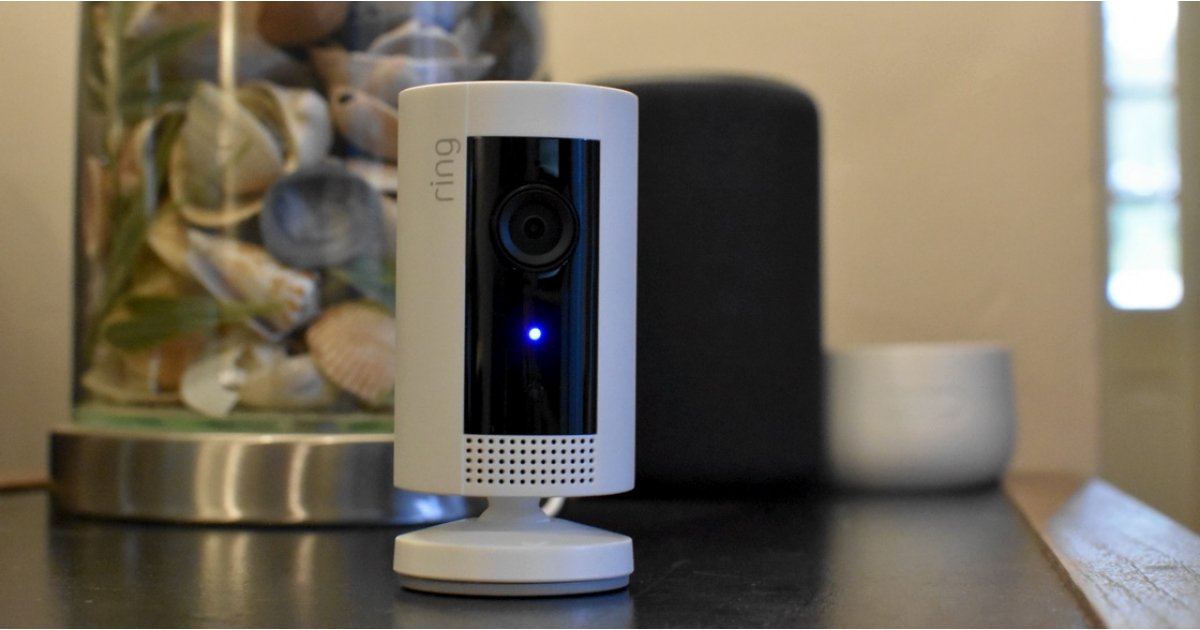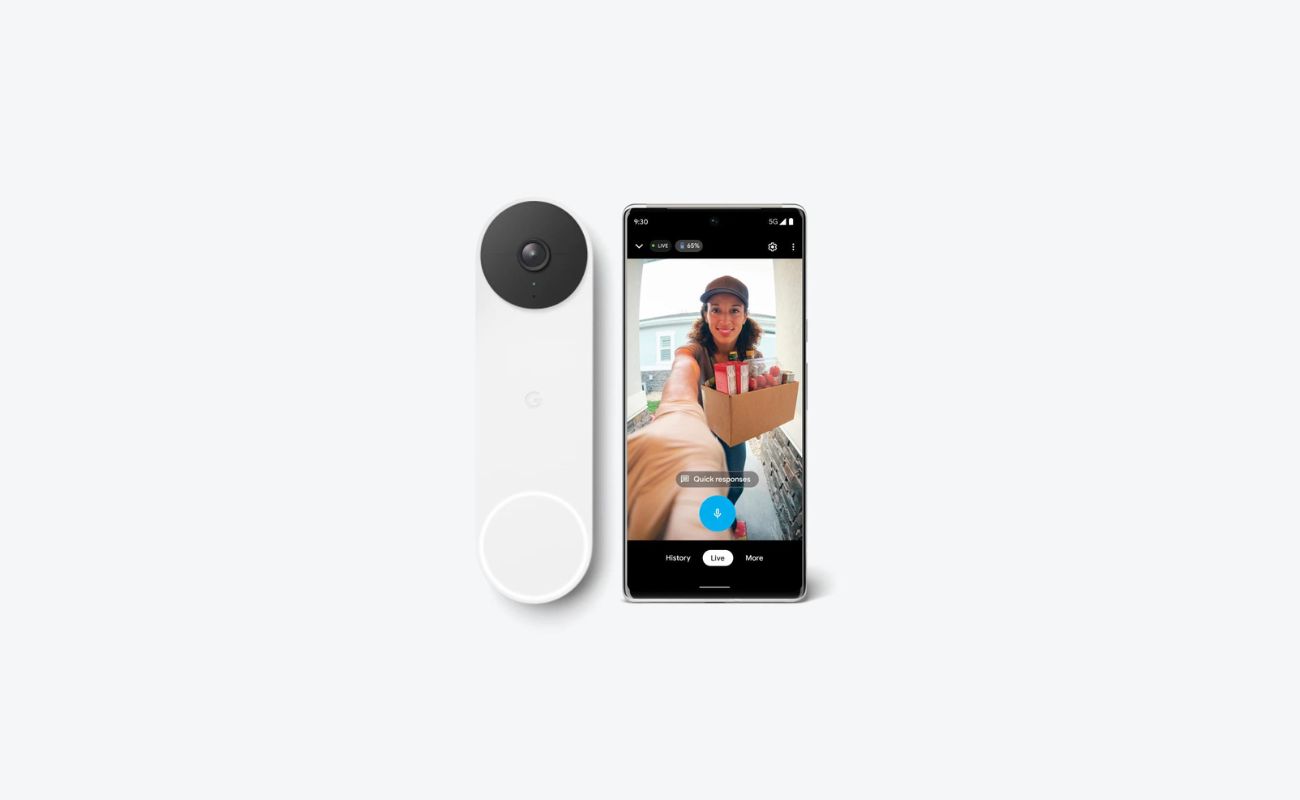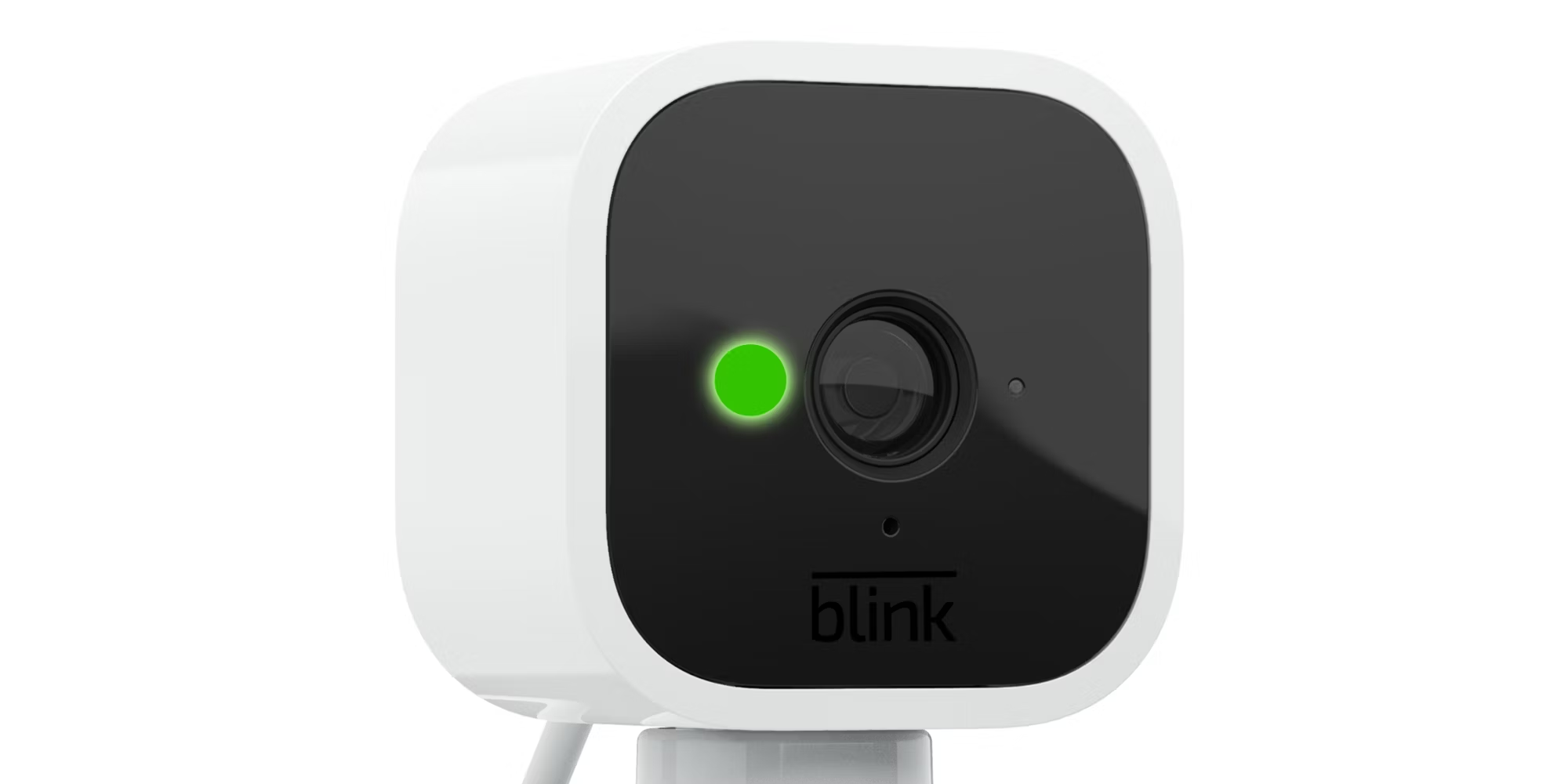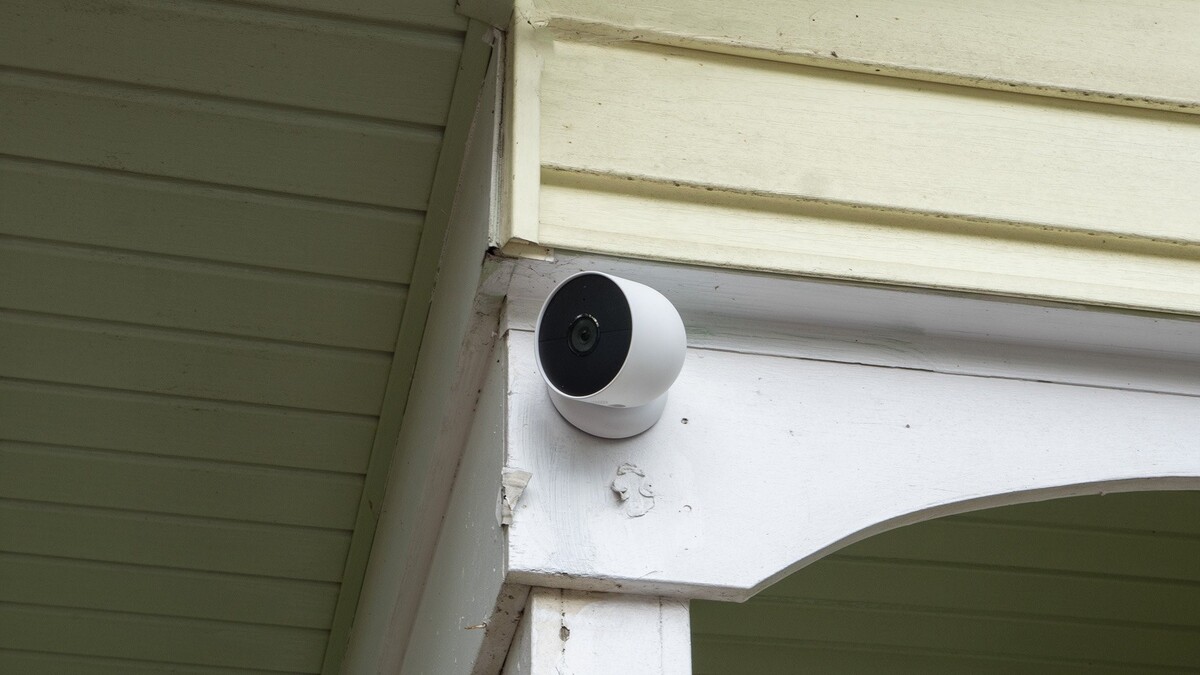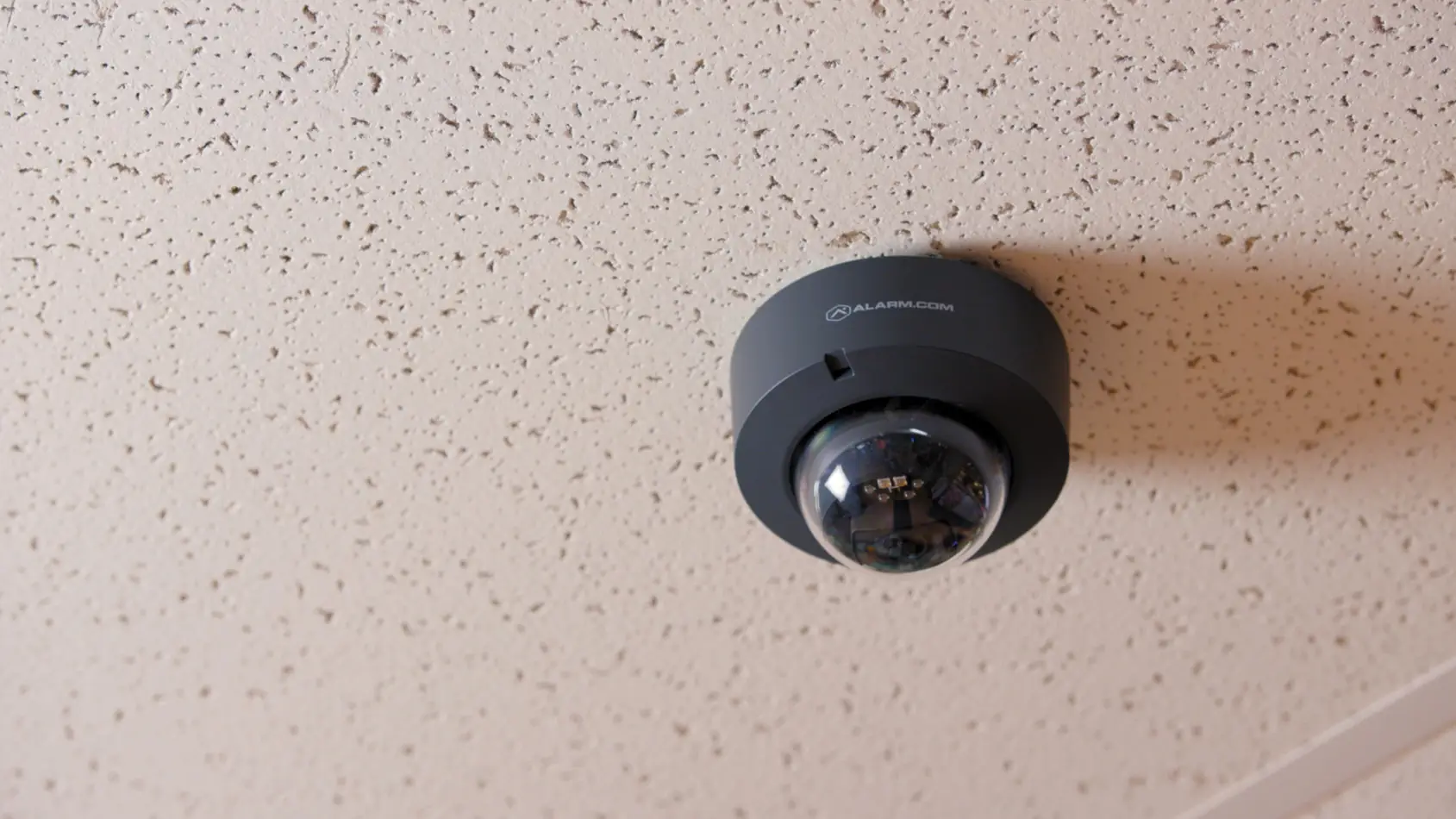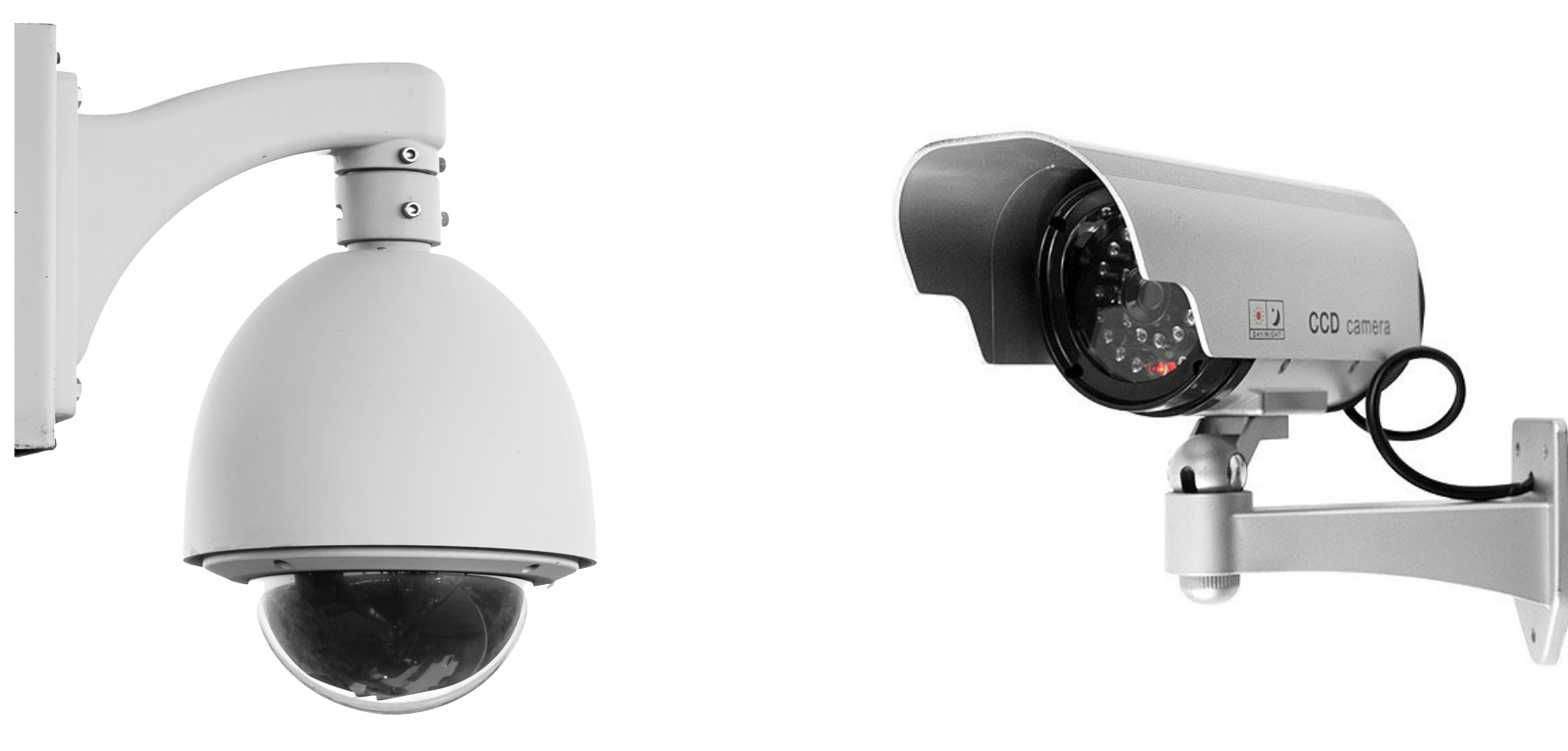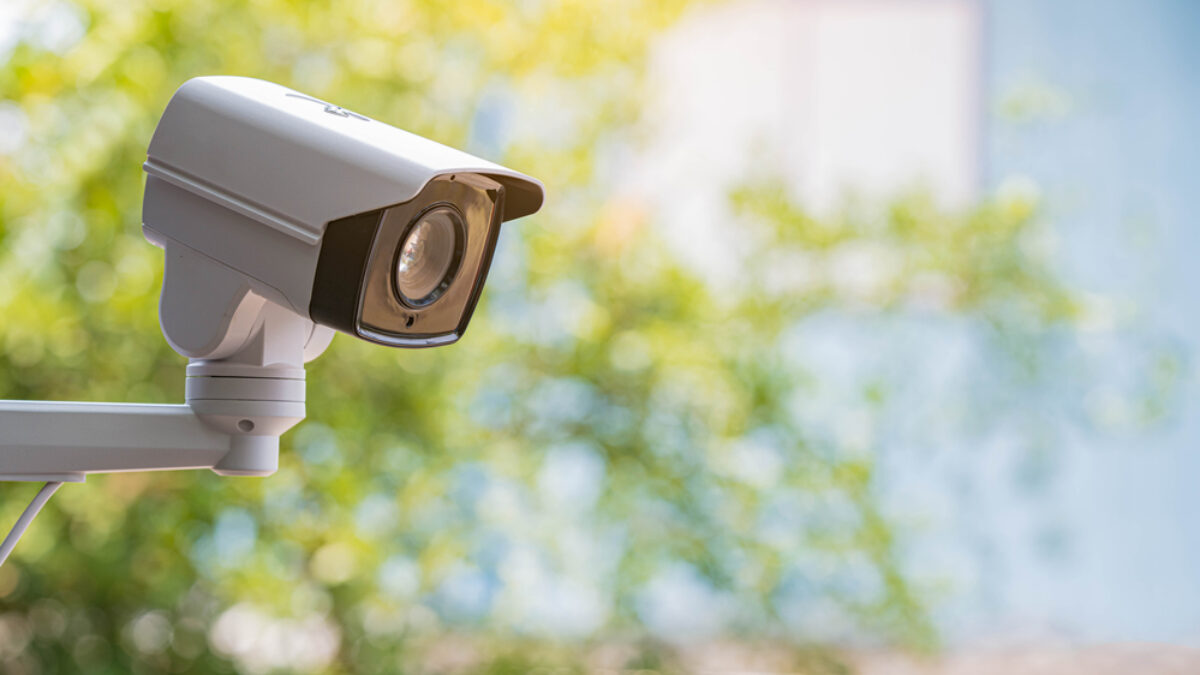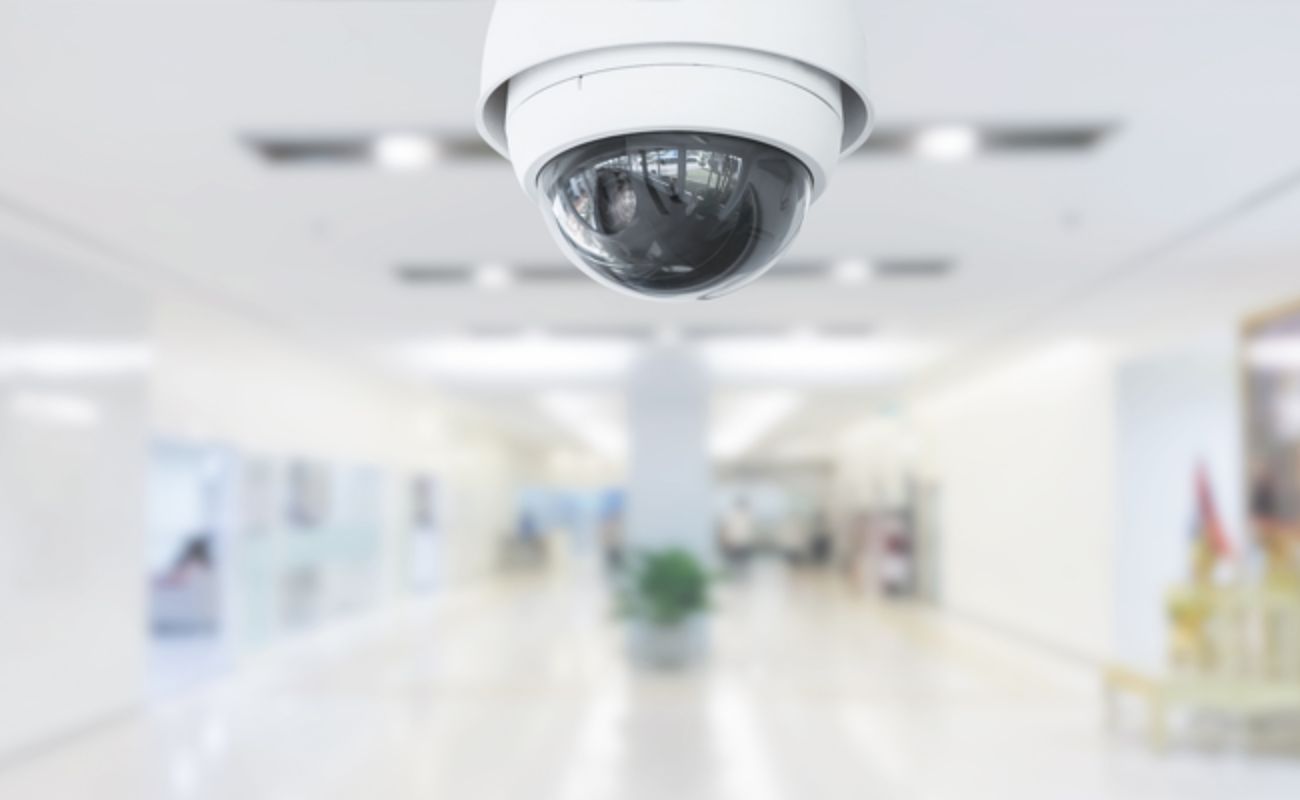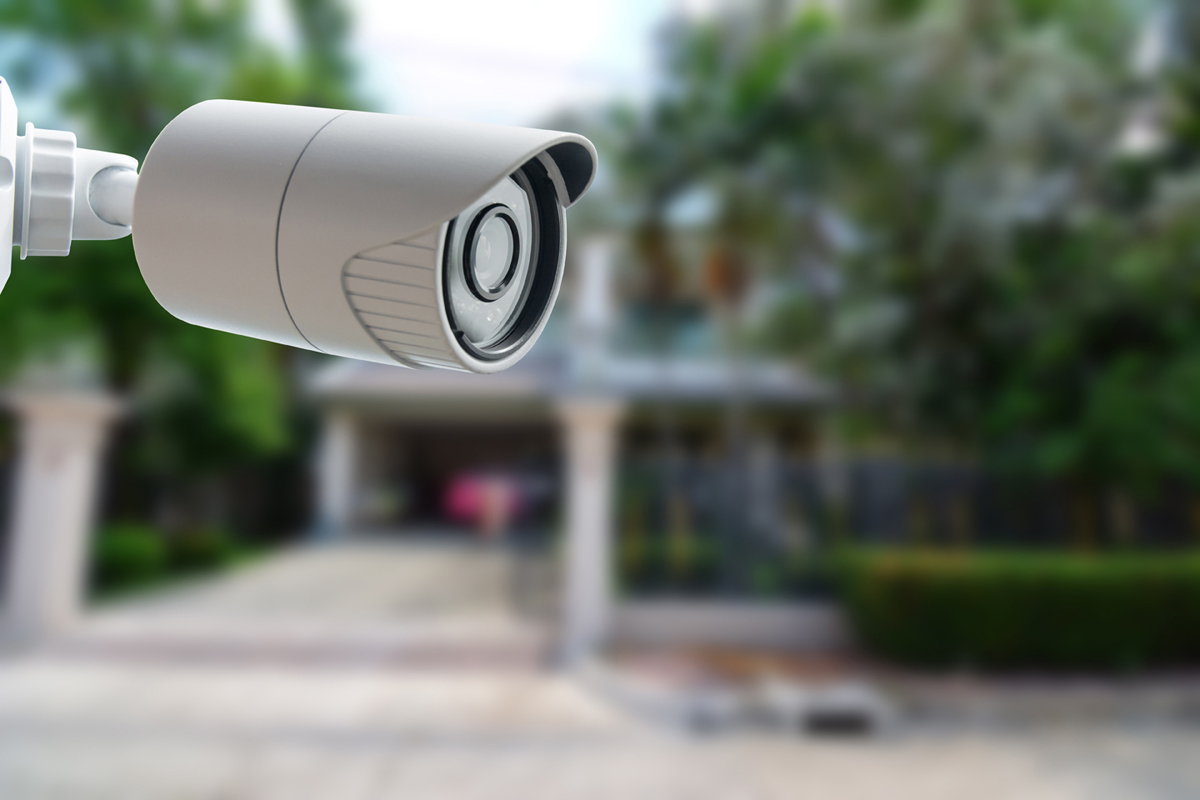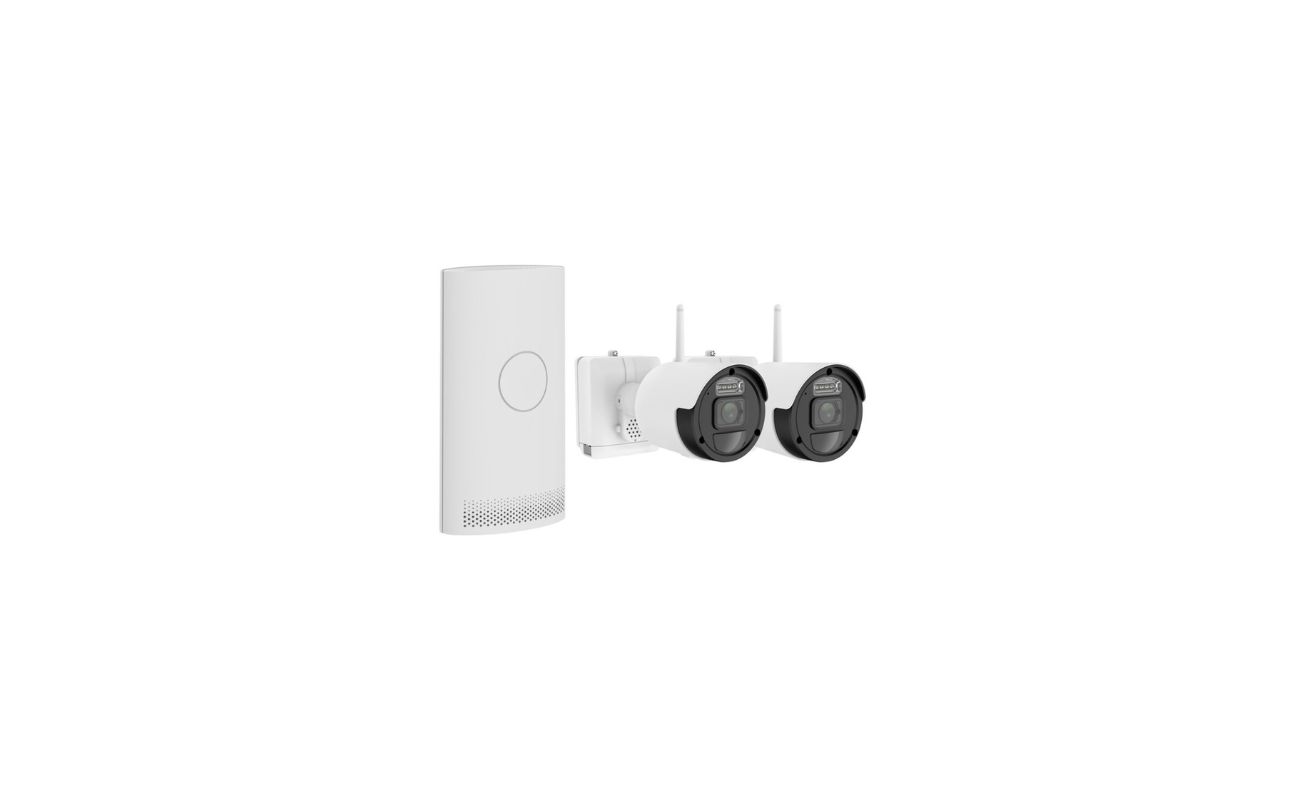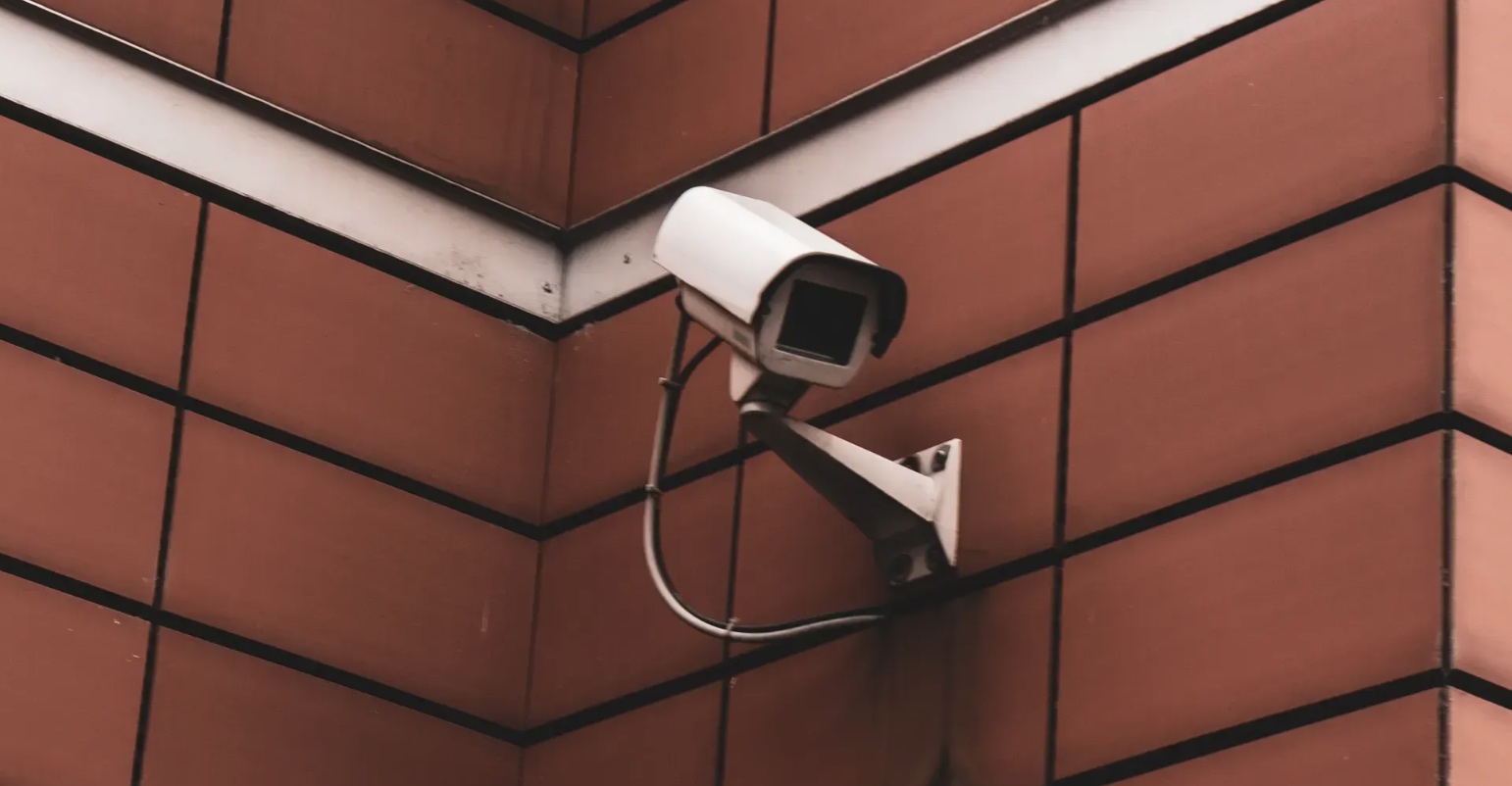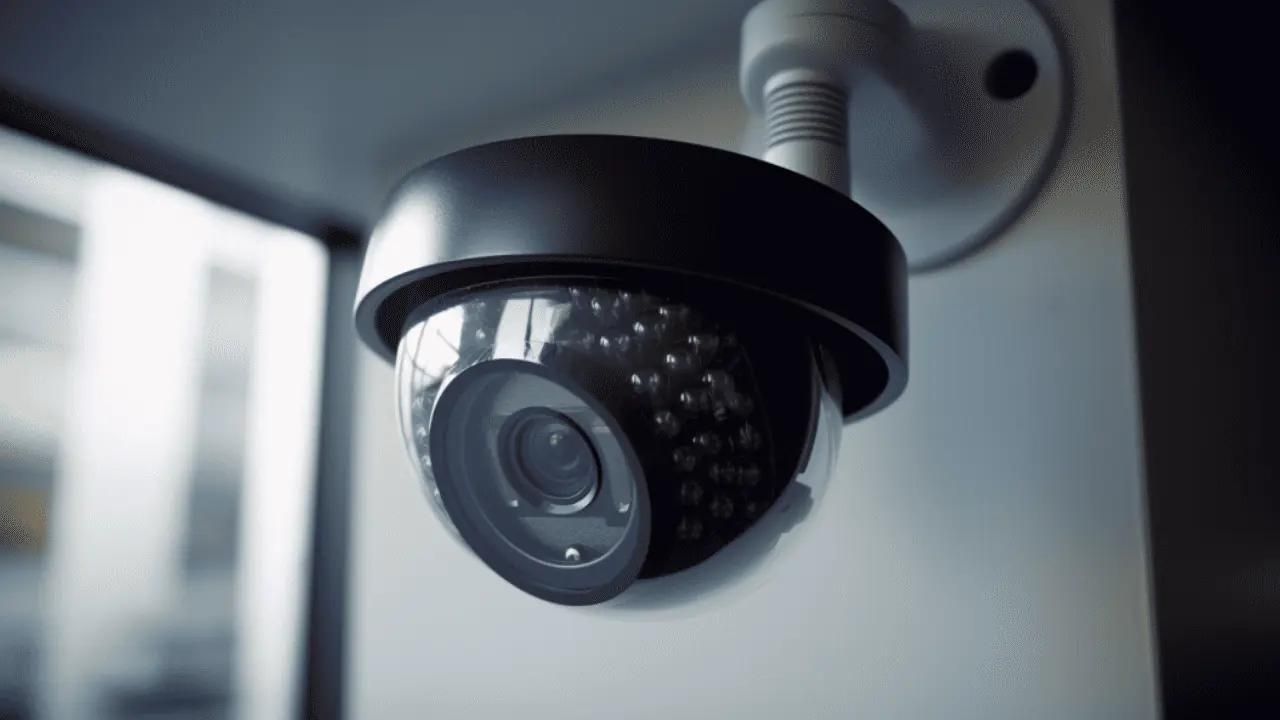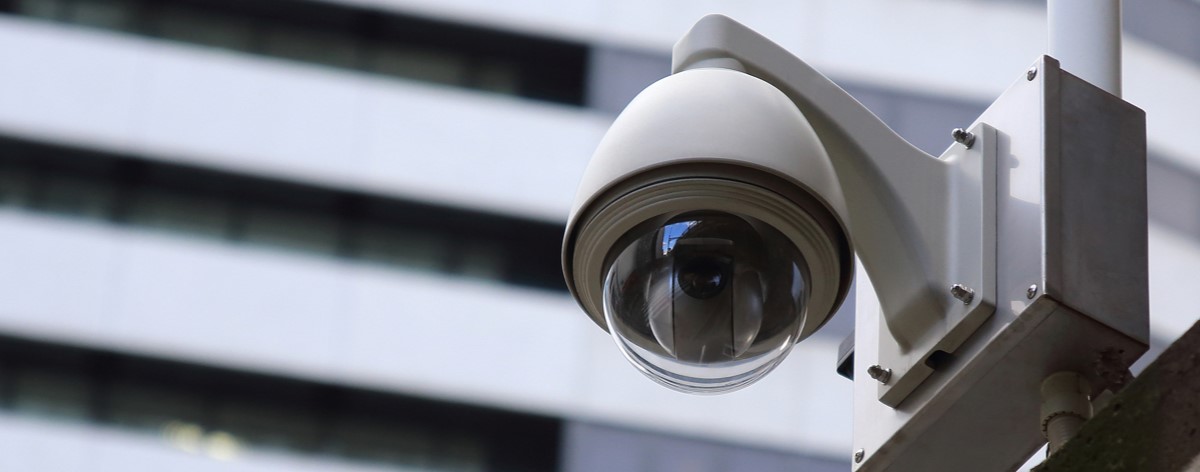Home>Home Security and Surveillance>What Does Nvr Mean On Security Cameras
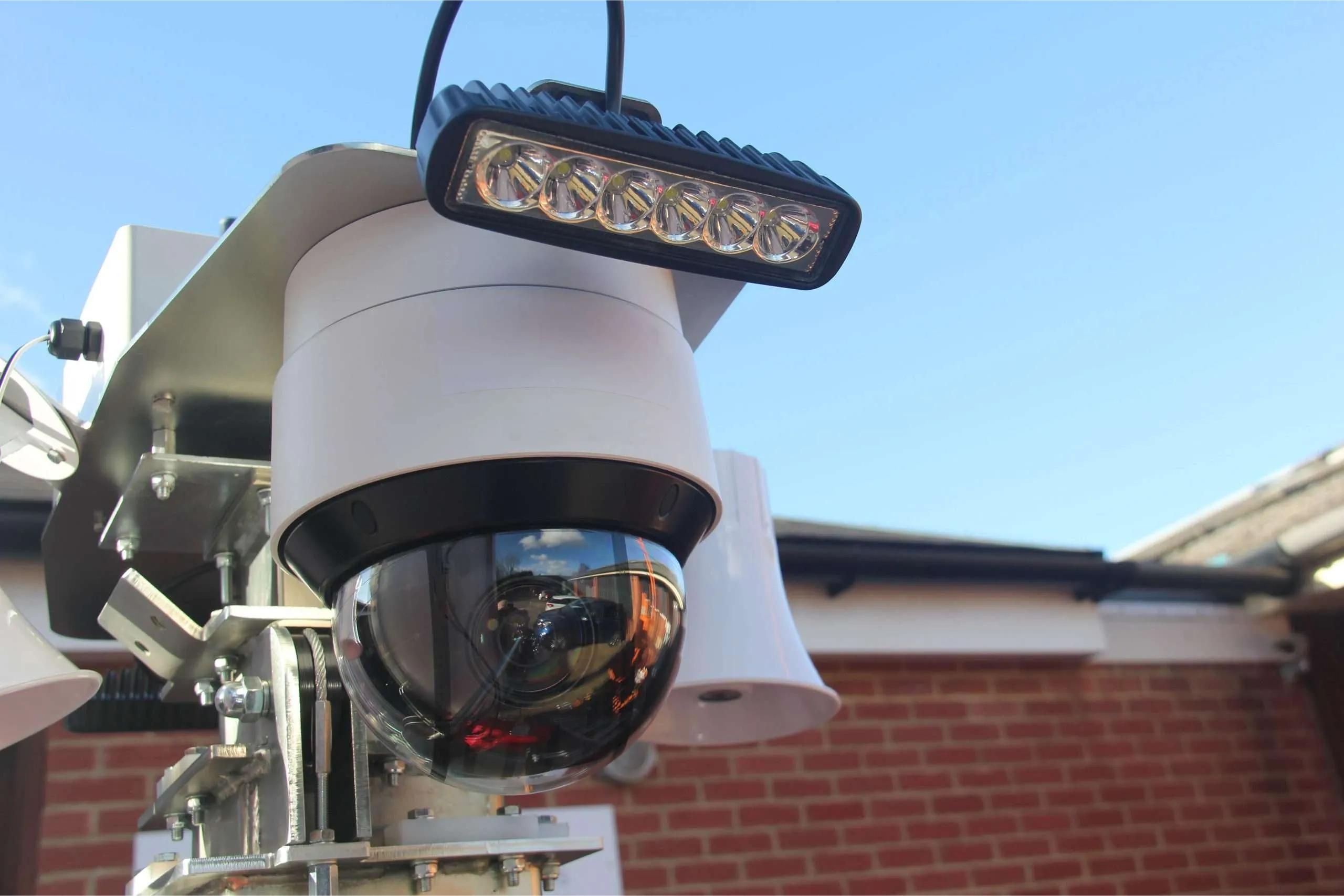

Home Security and Surveillance
What Does Nvr Mean On Security Cameras
Modified: March 6, 2024
Looking to enhance your home security and surveillance? Learn what NVR means on security cameras and how it can benefit you.
(Many of the links in this article redirect to a specific reviewed product. Your purchase of these products through affiliate links helps to generate commission for Storables.com, at no extra cost. Learn more)
Introduction
Welcome to the world of home security and surveillance! In this day and age, ensuring the safety of our homes and loved ones has become a top priority. With advances in technology, home security systems have undergone a transformative evolution, offering us peace of mind like never before.
One of the key components of a modern home security system is the Network Video Recorder, commonly known as NVR. You may have come across this term while researching security cameras, but what exactly does NVR mean, and how does it play a role in protecting our homes?
In this comprehensive guide, we will delve into the realm of NVRs and explore their functionality, benefits, and applications. Whether you’re a homeowner looking to enhance your security measures or a technology enthusiast seeking knowledge about surveillance systems, this article is packed with valuable insights to help you make informed decisions.
So, let’s get started by gaining an overview of what NVRs are and how they work.
Key Takeaways:
- NVRs are essential for modern home security, offering high-quality video, remote access, and intelligent features. They provide peace of mind and protect your property effectively.
- When choosing an NVR, consider factors like camera compatibility, storage capacity, and remote access. Proper setup and troubleshooting ensure a reliable and secure surveillance system.
Read more: What Does HDD Mean On Security Cameras
Overview of NVRs
Network Video Recorders (NVRs) are essential components of modern home security systems. They are specialized devices designed to capture, record, and store video footage from surveillance cameras. Unlike traditional Digital Video Recorders (DVRs), which use analog cameras, NVRs work with IP (Internet Protocol) cameras, which provide higher quality video and advanced features.
NVRs are the heart of a surveillance system, responsible for processing and managing the video data received from IP cameras. With the help of powerful processors and software, NVRs can handle multiple camera streams simultaneously and provide advanced features such as motion detection, remote access, and video analytics.
The primary function of an NVR is to record video footage captured by IP cameras. This gives homeowners the ability to review the recorded content later and provides crucial evidence in the event of a security breach or incident. NVRs typically include large storage capacities, allowing for long-term recording and easy retrieval of data.
Another important aspect of NVRs is their ability to provide real-time or live monitoring. Through network connectivity, NVRs enable users to view the video feed from their surveillance cameras on their smartphones, tablets, or computers, no matter where they are. This remote access feature allows users to keep an eye on their properties while away, enhancing security and peace of mind.
Additionally, NVRs can be integrated with other security devices and systems, such as alarms, sensors, and access control systems. This integration creates a comprehensive security ecosystem, increasing the effectiveness and efficiency of the overall home protection system.
Now that we have an overview of NVRs and their fundamental functions, let’s dive deeper into how they work.
How NVRs Work
Network Video Recorders (NVRs) employ a combination of hardware and software to effectively capture, process, and store video data from IP cameras. Understanding how NVRs work is essential in order to appreciate the capabilities and advantages they offer in home security and surveillance.
At the core of an NVR is its hardware components, which include a processor, memory, storage devices, and network interfaces. The processor is responsible for handling tasks such as video compression, decoding, and management of camera feeds. The memory ensures smooth operation by temporarily storing data and facilitating quick access. The storage devices, often in the form of hard drives, provide ample space for recording and archiving video footage. Lastly, the network interfaces facilitate communication between the NVR and the IP cameras, allowing for seamless data transmission.
On the software side, NVRs run an operating system that provides the necessary functionalities and features. This software is specifically designed to handle the requirements of video surveillance, including camera management, video recording, playback, and remote access. Advanced NVR software may include additional capabilities such as motion detection, video analytics, and integration with other security systems.
When an IP camera is connected to an NVR, the camera streams video data over the local network. The NVR captures this data and applies compression algorithms to reduce the file size without significantly compromising the video quality. This compressed video is then stored on the NVR’s hard drives. The storage capacity of an NVR determines how long it can retain recorded footage.
In addition to video storage, NVRs also provide advanced features to enhance the functionality and flexibility of the surveillance system. Motion detection is a common feature, where the NVR analyzes video frames to detect any movement. This enables the system to trigger alerts or start recording when motion is detected. Some NVRs also support video analytics, which can identify specific objects or events, such as people, vehicles, or facial recognition, providing valuable insights for security purposes.
Furthermore, NVRs enable remote access, allowing users to monitor their surveillance cameras from anywhere using a smartphone, tablet, or computer. This is made possible through the NVR’s network connectivity, which enables secure remote access over the internet. With remote access, homeowners gain the ability to check in on their property in real-time and receive alerts and notifications on any suspicious activities.
In summary, NVRs act as the central hub of a surveillance system by capturing, processing, and storing video data from IP cameras. Their hardware and software components work together to enable seamless video management, remote access, and advanced functionalities that enhance the overall security and surveillance experience.
Benefits of NVRs
Network Video Recorders (NVRs) offer numerous benefits when it comes to home security and surveillance. Their advanced features and capabilities make them an indispensable tool in protecting your property and loved ones. Let’s explore some of the key benefits that NVRs provide:
- High-Quality Video: NVRs work with IP cameras, which provide superior video quality compared to analog cameras. With high-resolution and high-definition capabilities, NVRs capture clear and detailed footage, allowing for effective identification of people, objects, and activities.
- Scalability: NVRs offer scalability, meaning you can easily add and integrate additional IP cameras into your system as your security needs grow. This flexibility allows you to expand your surveillance coverage and customize your system to address specific areas or vulnerabilities.
- Remote Access: One of the standout benefits of NVRs is the ability to access your surveillance cameras remotely. Whether you’re at work, on vacation, or simply away from home, you can use a smartphone or computer to view live video feeds, check recorded footage, and receive real-time alerts. This feature provides peace of mind and enables you to stay connected to your home, no matter where you are.
- Intelligent Features: NVRs often come equipped with intelligent features such as motion detection and video analytics. Motion detection allows the system to automatically trigger recording or send notifications when movement is detected, providing an efficient way to monitor your property. Video analytics take it a step further by enabling the NVR to recognize specific objects or events, helping to filter and prioritize alerts based on predefined parameters.
- Centralized Management: With NVRs, managing your surveillance system becomes much more convenient. The NVR acts as a centralized hub where you can monitor and control multiple cameras simultaneously, adjust settings, review recorded footage, and even perform system updates. This centralized management simplifies the operation and maintenance of your security system.
- Data Storage: NVRs feature ample storage capacity, allowing for long-term storage of video footage. This is especially valuable when it comes to reviewing incidents or gathering evidence, as you can easily access and retrieve recorded footage when needed. Additionally, NVRs often offer various storage options, such as local hard drives or cloud-based storage, providing flexibility to choose the most suitable solution for your needs.
Overall, NVRs provide enhanced security, convenience, and flexibility compared to traditional surveillance systems. Their high-quality video, remote access capabilities, intelligent features, centralized management, and ample storage make them a powerful tool to safeguard your home and loved ones.
Key Features of NVRs
Network Video Recorders (NVRs) offer a range of features that contribute to their effectiveness in home security and surveillance. These features elevate the surveillance experience, providing enhanced functionality and versatility. Let’s explore some of the key features that make NVRs stand out:
- High-resolution Recording: NVRs are designed to support high-resolution recording, allowing for crisp and detailed video footage. Whether it’s 1080p Full HD or even 4K Ultra HD, NVRs can capture and store video in exceptional clarity, ensuring that no details are missed.
- Multiple Camera Support: NVRs can handle multiple cameras simultaneously, making them suitable for both small and large-scale surveillance systems. Whether you have a few cameras or a complex network of cameras covering various areas, the NVR can efficiently process and manage the video feeds from each camera.
- Remote Access: The ability to remotely access your surveillance system is a valuable feature provided by NVRs. You can access live video feeds, review recorded footage, and manage settings from anywhere using a smartphone, tablet, or computer. This convenience ensures that you can keep an eye on your property and loved ones, even when you’re away.
- Motion Detection: NVRs often come equipped with motion detection capabilities. This feature allows the NVR to detect movement within the camera’s field of view. When motion is detected, the NVR can trigger recording, send alerts, or perform other predefined actions, enhancing the efficiency and effectiveness of your security system.
- Video Analytics: Advanced NVRs may incorporate video analytics technology. This feature enables the NVR to analyze video data and extract valuable information. For example, it can identify objects, detect changes in the scene, or even recognize specific behaviors or events. Video analytics provide deeper insights into your surveillance footage, allowing you to optimize security measures and respond effectively to potential threats.
- Intelligent Search and Playback: NVRs make it easy to search and playback recorded footage. You can search for specific events, such as motion-triggered recordings or specific time frames, which saves time and effort in locating relevant video clips. Some NVRs also offer intelligent playback features, such as synchronized playback from multiple cameras or thumbnail previews, improving the convenience of reviewing recorded videos.
- Storage Options: NVRs typically offer various storage options to accommodate different needs. Local storage using internal hard drives is common and allows for large-capacity video storage. Additionally, some NVRs offer the option to expand storage through external devices or utilize cloud-based storage, providing flexibility and scalability.
- Integration with Other Security Systems: NVRs can integrate with other security systems, such as alarms, sensors, and access control systems. This integration allows for a seamless and comprehensive security solution for your home. For instance, when an alarm is triggered, the NVR can automatically start recording and send alerts, providing a synchronized response to potential security breaches.
These key features make NVRs a powerful and versatile component of a home security system. Their advanced capabilities, combined with user-friendly interfaces, provide homeowners with the tools they need to effectively monitor, protect, and secure their properties.
Read more: What Does “M” Mean On A Security Camera
Understanding the “NVR” Abbreviation
If you’ve been researching home security and surveillance systems, you may have come across the abbreviation “NVR” in your quest for knowledge. Understanding what NVR stands for and its significance in the realm of security cameras is essential to make informed decisions regarding your home’s protection.
NVR stands for Network Video Recorder. It is a specialized device that records and stores video footage from IP (Internet Protocol) cameras. Unlike traditional analog cameras, which require a Digital Video Recorder (DVR) for recording, IP cameras connect directly to an NVR using a network connection.
The “network” aspect of NVR refers to its ability to receive video data over a network. IP cameras send the video feeds over the local area network (LAN) or the internet, and the NVR captures and processes the data for recording and storage. This network connectivity enables efficient communication and data transfer between the NVR and the IP cameras.
It’s important to note that the term “NVR” specifically refers to the device responsible for recording and managing video footage. It does not include the IP cameras themselves, which are separate devices that capture the video and transmit it to the NVR.
When selecting a home security system, understanding the NVR abbreviation is crucial because it signifies compatibility with IP cameras. If you have or plan to use IP cameras for your surveillance needs, investing in an NVR is essential to fully utilize their capabilities.
By utilizing an NVR, you can take advantage of features such as high-resolution recording, remote access, motion detection, and advanced video analytics. These features significantly enhance the functionality and effectiveness of your surveillance system, providing enhanced security for your home.
It’s worth mentioning that there are also hybrid systems available that support both IP cameras and traditional analog cameras. These systems often include a hybrid NVR that can accommodate both types of cameras, providing flexibility and compatibility with different camera technologies.
In summary, NVR stands for Network Video Recorder, a device dedicated to capturing and storing video footage from IP cameras. Understanding this abbreviation is crucial when choosing a home security system, as it indicates compatibility with IP cameras and access to advanced features that enhance the effectiveness of your surveillance system.
An NVR (Network Video Recorder) is a device used to record and store video footage from security cameras. It is important to ensure that the NVR is compatible with the security cameras being used to ensure proper functionality.
NVR vs. DVR: What’s the Difference?
When it comes to home security and surveillance, two common terms you may come across are NVR and DVR. Understanding the difference between these two systems is essential in determining the most suitable option for your specific requirements. Let’s explore the distinctions between NVR and DVR:
1. Technology: The primary difference between NVR and DVR lies in the type of cameras they support. NVR, which stands for Network Video Recorder, is specifically designed for use with IP (Internet Protocol) cameras. These cameras transmit video data over a network connection, and the NVR captures and processes this data for recording and storage. On the other hand, DVR, or Digital Video Recorder, is designed for use with traditional analog cameras, which transmit video signals directly to the DVR.
2. Video Quality: NVRs offer superior video quality compared to DVRs. IP cameras used with NVRs provide high-resolution footage, including options for Full HD (1080p) or even Ultra HD (4K) resolution. In contrast, DVRs are limited to the resolution supported by analog cameras, which typically ranges from Standard Definition (SD) to 720p.
3. Compression and Video Management: NVRs utilize efficient video compression algorithms to reduce file sizes without compromising video quality. This allows for efficient storage and transmission of high-resolution video data. DVRs, however, use analog video compression methods, which are less efficient and can result in a loss of video quality during compression and decompression processes.
4. Camera Flexibility: NVRs offer greater flexibility in camera placement and setup. IP cameras used with NVRs can be located anywhere within the network range, allowing for easy installation and scalability. In contrast, DVRs are limited to the proximity of analog cameras and are more restrictive in terms of camera placement.
5. Remote Access and Integration: NVRs provide seamless remote access capabilities, allowing users to view live video feeds and recorded footage from anywhere using a smartphone, tablet, or computer. DVRs, on the other hand, may have limited remote access functionality and often require additional equipment or complicated setup to enable remote viewing.
6. System Upgrades: NVRs offer more flexibility for future system upgrades. IP cameras used with NVRs can be easily replaced or upgraded without the need to replace the entire system. This scalability allows for easy integration of new camera technologies and features in the future. In contrast, upgrading a DVR system usually requires replacing the entire system, including the DVR itself and the analog cameras.
While NVRs excel in terms of video quality, flexibility, and advanced features, DVRs still have their place in certain applications. DVRs can be a cost-effective solution for small-scale surveillance systems with a limited number of cameras. Additionally, if you already have analog cameras installed and are not planning on upgrading to IP cameras, a DVR might be a suitable choice.
In summary, NVRs are designed for use with IP cameras, offering higher video quality, enhanced flexibility, remote access capabilities, and compatibility with future upgrades. On the other hand, DVRs work with analog cameras, have limitations in video quality and remote access, and may be a more economical choice for small-scale systems. Assessing your specific needs and camera requirements will help determine whether an NVR or DVR system is the right fit for your home security and surveillance needs.
Common Applications of NVRs
Network Video Recorders (NVRs) have a wide range of applications in home security and surveillance. Their versatile functionalities, high-quality video recording, and advanced features make them suitable for various scenarios. Let’s explore some of the common applications of NVRs:
- Residential Security: NVRs are widely used in residential settings to enhance home security. With the ability to connect to multiple IP cameras, homeowners can monitor their property from different angles and locations. NVRs provide peace of mind by allowing users to remotely access live video feeds, receive real-time alerts, and review recorded footage in the event of a security breach.
- Commercial and Retail: NVRs are extensively utilized in commercial and retail environments to ensure safety and minimize theft. By implementing IP surveillance cameras connected to an NVR, businesses can monitor customer activity, identify suspicious behaviors, and deter potential criminal activities. NVRs also allow for easy integration with access control systems and other security devices, creating a comprehensive security solution.
- Public Spaces and Institutions: NVRs play a vital role in monitoring public spaces and institutions, such as parks, schools, hospitals, and government buildings. These areas often require comprehensive surveillance coverage to ensure safety and maintain public order. NVRs can efficiently manage multiple cameras installed in different locations, providing real-time monitoring and evidence collection capabilities.
- Construction Sites and Industrial Settings: Construction sites and industrial settings face unique security challenges due to their vast areas and valuable equipment. NVRs can be utilized to monitor activities, prevent unauthorized access, and enhance safety protocols. IP cameras connected to an NVR can capture high-resolution video, making it easier to identify potential risks or incidents that may occur in these environments.
- Transportation and Logistics: NVRs are widely used in the transportation and logistics industry to monitor fleet vehicles, warehouses, and distribution centers. With IP cameras and NVRs, businesses can track goods, ensure compliance with safety regulations, and prevent theft or damages. Real-time access to video feeds and recorded footage helps improve logistics operations and protect valuable assets.
- Community Surveillance: NVRs play a significant role in community surveillance initiatives to enhance overall security and crime prevention. Neighborhoods and homeowners’ associations often install IP cameras connected to an NVR at key entry points, common areas, or surveillance hotspots. This allows for joint monitoring, improved situational awareness, and prompt response in case of suspicious activities.
The applications of NVRs are not limited to the above scenarios. They can be tailored to meet the unique needs of specific environments and industries, providing effective surveillance and peace of mind. Whether it’s for residential, commercial, public, or industrial use, NVRs offer a reliable and flexible solution for robust security and surveillance systems.
Factors to Consider When Choosing an NVR
Choosing the right Network Video Recorder (NVR) is a crucial step in building an effective and reliable home security and surveillance system. With numerous options available in the market, it’s important to consider several factors to ensure that you select the NVR that best fits your specific needs. Here are some key factors to consider:
- Number of Cameras: Determine the number of cameras you plan to connect to the NVR. This will help you select an NVR with enough channels to support your desired camera count, allowing for future scalability if needed.
- Camera Compatibility: Ensure that the NVR you choose is compatible with the IP cameras you intend to use. Verify that the NVR supports the same camera brands, models, and protocols, ensuring seamless integration and optimal performance.
- Video Storage Capacity: Consider the storage capacity of the NVR, as it determines how much video footage can be recorded and stored. Calculate the storage requirements based on the number of cameras, desired video quality, and retention period. Choose an NVR with sufficient storage or options for expanding the storage capacity if needed.
- Video Resolution: Assess the resolution requirements for your surveillance system. If you need high-definition video, select an NVR that supports the desired resolution, such as 1080p Full HD or even 4K Ultra HD, ensuring that the NVR can capture and store quality footage from your IP cameras.
- Remote Access: If remote access is important to you, ensure that the NVR provides user-friendly remote viewing capabilities. Look for features such as mobile apps or web interfaces that allow you to access live video feeds and recorded footage from anywhere using a smartphone, tablet, or computer.
- Network Connectivity: Consider the network connectivity options of the NVR. Ensure that it supports wired and wireless connections, giving you flexibility in connecting your IP cameras to the network. A reliable and stable network connection is crucial for seamless video transmission and remote access.
- User Interface: Evaluate the user interface of the NVR. A user-friendly and intuitive interface makes it easier to navigate and manage the surveillance system. Look for features such as easy-to-use menus, search and playback functionalities, and the ability to customize settings to suit your preferences.
- Advanced Features: Determine if you require any specific advanced features, such as motion detection, video analytics, or integration with other security systems. Depending on your needs, choose an NVR that offers the desired features to enhance the functionality and effectiveness of your surveillance system.
- Budget: Consider your budget and ensure that the chosen NVR fits within your financial constraints. While it’s important to invest in a reliable and feature-rich NVR, setting a budget beforehand will help narrow down the options and find the best value for your money.
By carefully considering these factors, you can select an NVR that meets your specific requirements, maximizes the functionality of your surveillance system, and provides long-term security and peace of mind for your home or business.
Setting Up and Configuring NVR Systems
Setting up and configuring a Network Video Recorder (NVR) system is a critical step in establishing an effective home security and surveillance solution. While the setup process may vary depending on the specific NVR model and manufacturer, the following steps provide a general guideline to help you get started:
- Choose the NVR Location: Select a suitable location for your NVR. Ensure that it is placed in a secure and well-ventilated area away from direct sunlight, moisture, and extreme temperatures. Ideally, the NVR should be centrally located to allow for efficient cable management and connectivity with the IP cameras.
- Connect the NVR to the Network: Connect the NVR to your local area network (LAN) using an Ethernet cable. Ensure that the NVR is powered on and properly connected to your modem or router. This connection provides network access for remote viewing, system updates, and firmware upgrades.
- Connect the IP Cameras: Connect your IP cameras to the NVR using Ethernet cables or a wireless network, depending on the camera’s capabilities and your chosen setup. Ensure that each camera is powered on and properly connected to the NVR. Follow the manufacturer’s instructions for camera placement and positioning, taking into consideration the areas you want to monitor.
- Configure the NVR: Access the NVR’s user interface either through a web browser or specialized software provided by the manufacturer. Follow the on-screen instructions to configure basic network settings, such as IP addresses, DNS settings, and port numbers. Set up user accounts and enable password protection to secure the NVR system.
- Create Camera Channels: Once the NVR is connected to the network and the cameras are detected, you will need to assign each camera to a specific channel on the NVR. This step ensures that the NVR can organize and manage the video feeds from each camera effectively. Assigning cameras to channels also allows you to easily navigate between camera views during live monitoring and playback.
- Set Recording and Storage Parameters: Configure the recording settings, such as resolution, frame rate, and recording quality, based on your preferences and storage capacity. Determine whether continuous recording or motion-based recording suits your needs. Consider setting up recording schedules to optimize storage space and ensure that critical periods are captured and stored.
- Enable Remote Access: If remote access is desired, configure the NVR for remote viewing capabilities. Set up port forwarding on your router or enable UPnP (Universal Plug and Play) to allow external access to the NVR over the internet. Enable mobile apps or web interfaces and follow the manufacturer’s instructions to set up remote access on your smartphone, tablet, or computer.
- Test and Verify: After completing the initial setup and configuration, test the system to ensure that cameras are functioning correctly and recording properly. Verify that you can access the live feeds and recorded footage remotely. Make any necessary adjustments to settings or camera positions to optimize the performance and coverage of the surveillance system.
It’s worth noting that the specific setup and configuration steps may vary depending on the NVR model and the software provided by the manufacturer. Always refer to the user manual or online documentation for detailed instructions and best practices specific to your NVR system.
By following these general guidelines and consulting the manufacturer’s instructions, you can properly set up and configure your NVR system, creating a robust and reliable home security and surveillance solution.
Troubleshooting NVR Issues
While Network Video Recorders (NVRs) are designed to provide reliable performance, occasional issues may arise. Troubleshooting these issues effectively can help ensure uninterrupted operation and maintain the functionality of your home security and surveillance system. Here are some common NVR issues and troubleshooting steps:
- Power Issues: If the NVR does not power on or shows no signs of activity, first check the power source and cables. Ensure that the power cable is securely connected to the NVR and the power outlet. Try a different power outlet or use a different power cable if necessary.
- No Video Feed: If the NVR is powered on but does not display the video feed from the connected cameras, check the camera connections and consider the following steps:
- Inspect the Ethernet cables connecting the cameras to the NVR. Ensure they are securely plugged in at both ends.
- Verify that the IP cameras are powered on and connected to the same network as the NVR.
- Check the network settings on both the NVR and cameras to ensure they are configured correctly.
- Restart the NVR and cameras to establish a fresh connection.
- Poor Video Quality: If the video quality from the cameras connected to the NVR is degraded or pixelated, consider the following steps:
- Check the resolution settings on the NVR and cameras. Ensure they are set to the desired resolution and are compatible with each other.
- Inspect the network bandwidth. If the network is congested, it can affect video quality. Consider dedicating more bandwidth or optimizing the network for better video transmission.
- Ensure that the Ethernet cables connecting the cameras to the NVR are of high quality and properly shielded.
- Remote Access Issues: If you are experiencing difficulties accessing the NVR remotely, consider the following troubleshooting steps:
- Check the internet connection on the NVR and the remote device. Ensure they are both connected to the internet and have reliable network connectivity.
- Verify the port forwarding settings on the router to ensure they are correctly set up for remote access. Make sure that the correct ports are forwarded to the NVR’s internal IP address.
- Ensure that the NVR software and any mobile apps or web interfaces are up to date. Outdated software versions may have compatibility issues.
- Test remote access using different devices or networks to determine if the issue is specific to a particular device or network configuration.
- System Freezing or Crashing: If the NVR freezes or crashes frequently, consider the following steps:
- Check the NVR’s system resources, such as CPU and memory usage. If they are consistently high, it may indicate that the NVR is overloaded. Consider upgrading the hardware or reducing the number of cameras connected to the NVR.
- Ensure that the NVR’s firmware is up to date. Check the manufacturer’s website for any available firmware updates and follow the instructions to install them.
- Inspect the temperature of the NVR. Overheating can cause system instability. Ensure that the NVR is properly ventilated and that airflow around the device is unobstructed.
- Perform a factory reset as a last resort. Keep in mind that this will erase all configurations and settings on the NVR, so backup important data beforehand.
If troubleshooting steps do not resolve the issue, it is recommended to consult the NVR manufacturer’s support documentation or contact their technical support for further assistance. They can provide specific troubleshooting steps tailored to your NVR model and help resolve the issue effectively.
By addressing common NVR issues promptly and following proper troubleshooting practices, you can maintain the optimal performance and reliability of your home security and surveillance system.
Conclusion
In today’s world, where security is a top concern, having a reliable home security and surveillance system is paramount. Network Video Recorders (NVRs) play a crucial role in ensuring the effectiveness and efficiency of such systems. Understanding the fundamentals, benefits, and functionalities of NVRs is essential to make informed decisions and create a robust security solution for your home.
Throughout this comprehensive guide, we explored various aspects of NVRs, starting from an overview of what NVRs are and how they work. We then discussed the benefits of using NVRs in home security and surveillance systems, emphasizing their high-quality video capabilities, remote access features, and advanced functionalities such as motion detection and video analytics.
We also compared NVRs with their analog counterpart, DVRs, highlighting the differences in technology, video quality, and flexibility. Additionally, we touched on the common applications of NVRs in residential, commercial, and public settings, showcasing their versatility and wide-ranging use.
Choosing the right NVR requires careful consideration of factors such as camera compatibility, storage capacity, and remote access capabilities. We provided an overview of these factors to help you make informed decisions and select the NVR that best suits your specific needs and budget.
Setting up and configuring an NVR system can seem daunting, but by following the recommended steps, you can successfully establish a secure and reliable surveillance system. We discussed the basics of setting up an NVR, connecting cameras, configuring network settings, and enabling remote access to ensure seamless monitoring and management of your surveillance system.
In the event of any issues with your NVR system, troubleshooting becomes essential. We provided a guide to help you identify and resolve common NVR issues, ensuring uninterrupted operation and optimal performance of your security system.
In conclusion, NVRs are powerful tools that offer advanced features, seamless integration, and scalable solutions for home security and surveillance. By understanding the capabilities and considerations associated with NVRs, you can create a robust and reliable system that provides peace of mind and protects what matters most to you.
Remember to consult the user manual and manufacturer’s documentation for specific instructions pertaining to your NVR model. If you encounter challenges or require further assistance, don’t hesitate to contact the manufacturer’s support team for expert guidance.
Investing in an NVR system is investing in the safety and security of your home and loved ones. By utilizing the knowledge gained from this guide, you are well-equipped to make informed decisions and create a comprehensive surveillance system that meets your unique needs and requirements.
Frequently Asked Questions about What Does Nvr Mean On Security Cameras
Was this page helpful?
At Storables.com, we guarantee accurate and reliable information. Our content, validated by Expert Board Contributors, is crafted following stringent Editorial Policies. We're committed to providing you with well-researched, expert-backed insights for all your informational needs.
